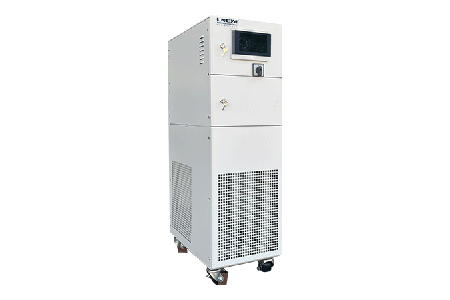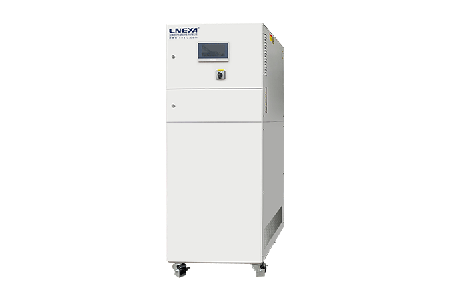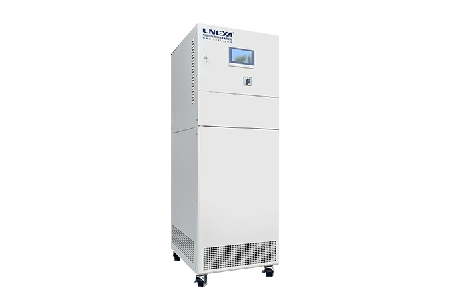When your chiller breaks down,do you know how to repair it ?This article introduces common chiller faults and solutions.Keep reading.
Warning
Chillers have electrical components,and it will be dangerous if you try to repair the unit without proper certification. You should seek help from a trained professional.
Tip
Many chillers have built-in self-diagnosis systems. When a fault occurs, the chiller fault codes will be displayed directly on the operation screen.
You can refer to the maintenance manual provided by the chiller manufacturer to check the meaning of the code and determine the cause of the fault.

Common Causes of Chiller Problems
Industrial chillers are strictly inspected before they are sold. This is to ensure they have no quality issues. If your unit breaks down, it could be due to wrong size, improper operation or lack of maintenance.
Wrong Size
When buying a chiller, you need to consider whether its cooling capacity, temperature range, capacity and other parameters meet your cooling needs.
- Undersize-Causes the chiller compressor to run continuously,but fail to reach the set temperature.
- Oversize-The cooling system runs at low load for a long time, wasting energy.
Improper Operation
Most of the failures of chillers are caused by improper operation. You must strictly follow the regulations in the operating manual. This is not only to protect the chiller, but also to protect your personal safety.
Lack of Maintenance
Effective preventive maintenance can extend the life of the chiller while ensuring its operating efficiency. You need to have dedicated maintenance personnel to regularly check the condition of each component of the chiller and record them. If you encounter a problem, be sure to solve it in time to avoid causing bigger problems.

Chiller Troubleshooting
Chiller Cannot Start
If your chiller system cannot start, you may consider the following issues:
- Power is not connected or switched on – You first need to make sure the power is on.
- Wrong phase connection – Chillers usually use three-phase power with a fixed phase sequence. When the phase connection is wrong, the chiller will activate the phase sequence protection function and automatically cut off the power supply with the wrong phase sequence. You need to check the phase connection.
- Loose wiring – You need to tighten the loose wiring so that the current can flow smoothly.
- Blown fuse – If the current is abnormal, the chiller will activate the protection device and cause the fuse to blow. This abnormality is usually caused by electrical overload or short circuit. The blown state of the fuse will help you know the cause of the chiller fault.
- Low refrigerant level- the chiller has a liquid level protection function, and the power will be cut off if the liquid level is too low. You need to check and refill the refrigerant regularly.
Leaking
- Aging seals – If your chiller uses a mechanical seal pump, the seal will loosen over time and cause leakage. If you want to reduce maintenance costs, it is recommended that you use a magnetic drive pump.
- Pipe corrosion – The cooling water of the water-cooled chiller must use clean plant water, otherwise it will corrode the pipes and cause leakage. You should clean the pipes and water towers regularly and conduct water quality tests.
- Loose joints – After long-term operation, the joints of the chiller may loosen and cause leakage. You need to check the connection of each joint.
- Damaged heat exchanger: After long-term use, the condenser and evaporator may break due to scaling or icing. They should be cleaned and maintained regularly.
Slow Cooling
- High ambient temperature – Air-cooled chillers rely on air temperature, so you need to provide them with a good heat dissipation environment.
- Evaporator icing – If there is too much moisture on the evaporator surface and the temperature is low, its pipes may freeze. This will limit the heat exchange area.
- Dirty condenser – If the condenser is dusty or clogged, it will block the flow of refrigerant. You must check and clean it regularly.
- Insufficient refrigerant – If too little refrigerant passes through the expansion valve, it will be difficult to exchange heat with the refrigerant in time at the evaporator, and the cooling efficiency of the chiller will be reduced. You need to check whether the refrigerant filling amount is too small or the expansion valve is too small.
Excessive Noise
- Loose structure – If the structure of the chiller is loose, loose screws will produce metal friction sounds. You need to tighten the screws.
- Fan failure – Most of the noise of general air-cooled chillers comes from the fan. Dust accumulation, imbalance, fan deformation, bearing damage, etc. can cause noise.
- Pipe vibration – If the pipes are set side by side and not fixed, the fluids will collide with each other and make noise when passing through. You’d better fix the pipes.
- Fixing problem – If the chiller is not placed steadily and there is no shock pad, it will make noise everywhere when it is running. You need to place the equipment on a stable ground.
High Pressure Discharge
- Insufficient heat dissipation of the condenser-If the cooling water temperature is too high, the fan speed is too low, or the condenser fins are clogged, the heat dissipation capacity of the condenser will be reduced, resulting in increased discharge pressure.
- Excessive refrigerant-When the refrigerant is overfilled, it will accumulate inside the pipeline, resulting in abnormal discharge pressure.
- Overheated return air-If the temperature of the refrigerant gas evaporated at the evaporator is too high, the gas temperature after the compressor is sucked in and then discharged is even higher, resulting in high pressure. You need to check whether the evaporator liquid supply is sufficient.
- Overheated return water-If you use a water-cooled chiller, when the temperature of the cooling water circulating to the condenser is too high, it is difficult to cool the refrigerant passing through in time, which will increase the discharge pressure.
Low Pressure Discharge
- Clogged evaporator – This is the most common problem and you should check first.
- Low refrigerant – This is also a common problem and you should add refrigerant in time.
- Partially closed suction valve – This is rare, but it is also one of the reasons for low pressure discharge.
High Suction Pressure
- Chiller Overload – When your process requires more cooling capacity than the chiller can provide, it is overloaded. You should reduce the load on the chiller or move the process to a higher capacity unit.
- Overfilled Refrigerant – If you add too much refrigerant, it will increase the suction and discharge pressure of the chiller. You should have a professional remove some of the refrigerant. Make sure the refrigerant charge is within the appropriate range.
- Faulty Expansion Valve – When the expansion valve is opened too wide, the refrigerant supply will increase, resulting in abnormal suction pressure. You need to check the operation of the expansion valve and adjust the opening to a smaller value if necessary.
Low Suction Pressure
- Low refrigerant level – You should check the refrigerant level to determine if this is caused by underfilling or leakage.
- Clogged throttle valve – A clogged throttle valve will cause less refrigerant to pass through, and the suction pressure of the evaporator will be reduced. You should check the condition of the filter drier and throttle valve and clean or replace them regularly.

Didn’t find the chiller failure you want to solve?
Don’t miss the opportunity to communicate with our professional technicians. LNEYA will provide you with FREE TECHNICAL CONSULTATION!

WeChat/Phone
86 18914253067

86 13912479193

Email Address
sales@cnzlj.com
Recommended chillers

LTZ +5℃-90℃
glycol chillers
Cooling capacity 4kW~20kW
Heating power 3.5kW~15kW
temperature accuracy ±0.3℃

LTZ -40℃~90℃
fluid chillers
Cooling capacity 0.7kW~11.5kW
Heating power 2.5kW~10kW
temperature accuracy ±0.3℃

LTZ +5℃~30℃
laboratory chillers
Cooling capacity 23kW~155kW
Circulation Pump MAX 5m³/h~28m³/h 2bar
temperature accuracy ±0.5℃

LTZ -25℃~30℃
sub zero chillers
Cooling capacity 7kW~64.5kW
Circulation Pump MAX 2.5m³/h~15m³/h 2bar
temperature accuracy ±0.5℃

LTZ -45℃~20℃
coolant chillers
Cooling capacity 5.7kW~32.4kW
Circulation Pump MAX 1.5m³/h~7.7m³/h 2bar
temperature accuracy ±0.5℃

LTZ -60℃~-30℃
air cooled chillers
Cooling capacity 6.2kW~31.7kW
Circulation Pump MAX 2.4m³/h~12.1m³/h 2bar
temperature accuracy ±0.5℃

LTZ -80℃~-50℃
water cooled chillers
Cooling capacity 3.7kW~30kW
Circulation Pump MAX 2.3m³/h~12m³/h 2bar
temperature accuracy ±0.5℃

LTZ -115℃~-80℃
cryogenic chillers
cooling capacity 0.6kW~2.8kW
Circulation Pump MAX 20L/min~40L/min 2bar
temperature accuracy ±0.5℃
 LNEYA Industrial Chillers Manufacturer Supplier
LNEYA Industrial Chillers Manufacturer Supplier










